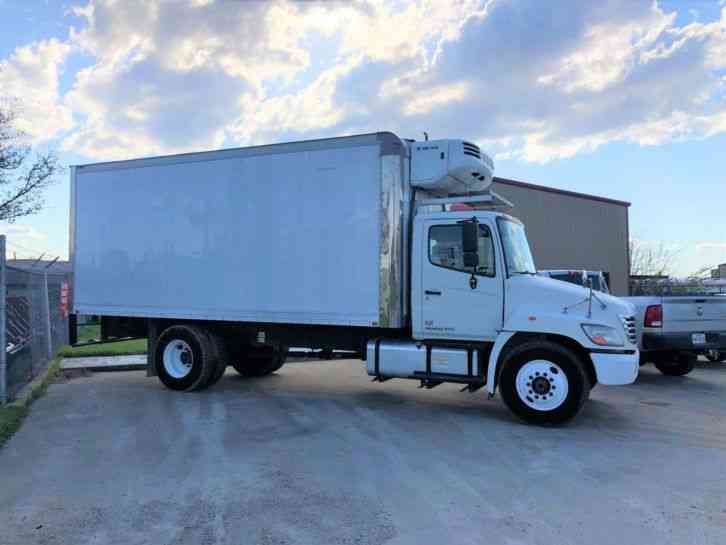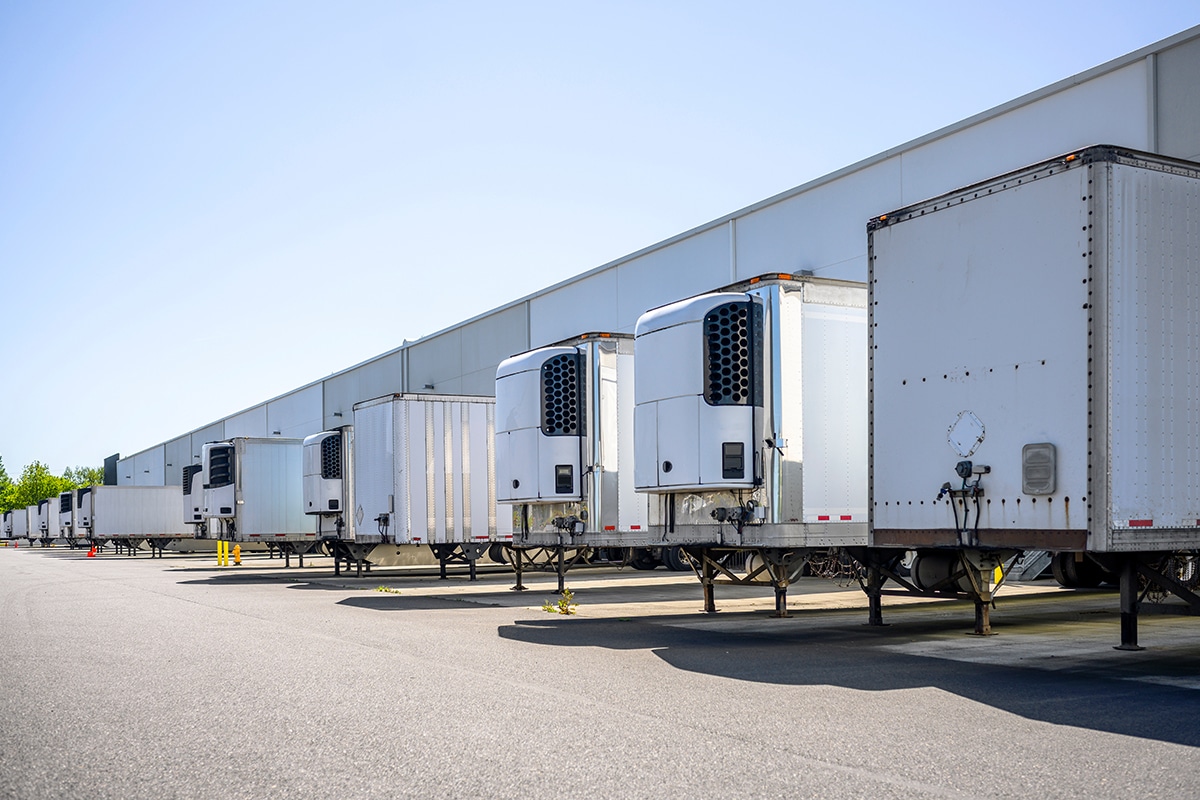Top Innovations in Transportation Refrigeration: Enhancing Performance and Safety And Security
The landscape of transportation refrigeration is undertaking substantial makeover, driven by advancements targeted at improving both performance and safety. Secret developments such as wise temperature level tracking systems, green cooling agents, and automated route optimization are pivotal in resolving the industry's obstacles. These innovations not only make sure the integrity of temperature-sensitive items but additionally contribute to sustainability initiatives. As these advancements continue to progress, it is important to discover their implications on functional practices and regulative compliance, triggering a more detailed evaluation of just how they reshape the future of transportation refrigeration.
Smart Temperature Monitoring Solutions
In the world of transportation refrigeration, smart temperature surveillance systems have actually become a vital technology for guaranteeing the stability of temperature-sensitive items. These advanced systems leverage Web of Points (IoT) technology to offer real-time information on temperature level variations, enabling operators to keep optimal conditions throughout the supply chain. By continuously tracking the temperature of cooled containers and cars, firms can quickly determine variances that might compromise item top quality.

In addition, smart surveillance systems typically include automated notifies and alerts, enabling stakeholders to react promptly to any type of potential problems. This aggressive approach not just minimizes the danger of perishing however additionally enhances compliance with governing standards regulating food security and pharmaceutical transportation.
The integration of data analytics within these systems additionally facilitates predictive upkeep, aiding operators to visualize prospective tools failures before they take place. This capability decreases downtime and maximizes functional performance, ultimately resulting in set you back financial savings.
Eco-Friendly Refrigerants
Smart temperature level monitoring systems play an essential function in keeping product quality, however the effectiveness of transportation refrigeration also rests on the choice of cooling agents used. As ecological concerns increase, the change in the direction of environmentally friendly cooling agents has ended up being crucial. Conventional cooling agents, such as hydrofluorocarbons (HFCs), are well-known for their high International Warming Potential (GWP), adding substantially to climate modification. On the other hand, emerging alternatives like hydrocarbon-based cooling agents and hydrofluoroolefins (HFOs) existing lower GWP options, using both effectiveness and sustainability.
These environment-friendly cooling agents not just decrease ecological impact but also align with worldwide guidelines focused on eliminating hazardous compounds. Their adoption can cause boosted energy performance, ultimately reducing operating expense for transport refrigeration systems. Furthermore, using natural refrigerants, such as ammonia and carbon dioxide, has actually obtained grip as a result of their exceptional thermodynamic residential or commercial properties and lower environmental impact.
Purchasing green cooling agents is not simply a regulative compliance step; it represents a strategic choice that improves brand name credibility and promotes customer commitment. thermo king truck refrigeration. By focusing on sustainable practices, firms can contribute to a greener future while ensuring the honesty of carried goods
Advanced Insulation Products
Utilizing innovative insulation materials is crucial for maximizing transport refrigeration systems, as they significantly improve energy performance and maintain regular temperature control. Typical insulation methods usually drop short in protecting against thermal transfer, causing increased energy intake and varying temperature levels within refrigerated areas.
Arising materials such as vacuum cleaner insulated panels (VIPs) and aerogels use superior thermal resistance, permitting thinner accounts without compromising performance. VIPs, as an example, utilize a vacuum layer to decrease conductive and convective warm transfer, making them ideal for space-constrained applications. Aerogels, understood for their light-weight and porous framework, offer outstanding insulation while dramatically reducing overall system weight.
Additionally, including stage change materials (PCMs) into insulation systems can additionally maintain temperatures during transit. These materials soak up and launch thermal power, effectively buffering against outside temperature variations.
The assimilation of these innovative insulation materials not just lowers the operational costs connected with energy usage however additionally expands the service life of temperature-sensitive items. As the transportation refrigeration sector proceeds to evolve, the fostering of cutting-edge insulation innovations will certainly be crucial in boosting both efficiency and security in refrigerated transport.
Automated Route Optimization
The efficiency of transportation refrigeration systems is considerably improved with automated route optimization, which leverages advanced algorithms and real-time information to establish one of the most effective paths for shipment. By evaluating various factors such as website traffic patterns, climate condition, and shipment windows, these systems can considerably decrease traveling time and gas usage.
Automated course optimization minimizes human mistake and subjective decision-making, Website which can cause ineffectiveness. This technology makes it possible for fleet managers to allocate resources extra properly, making sure that refrigerated items maintain their called for temperature throughout the trip. By maximizing paths, firms can likewise improve customer satisfaction with timely shipments.
Additionally, automated systems can adapt to unpredicted scenarios, such as roadway closures or unexpected website traffic spikes, permitting dynamic rerouting. This adaptability not only shields the integrity of temperature-sensitive items but additionally contributes to total operational effectiveness.
Implementing automated path optimization can result in substantial price financial savings while reducing the carbon footprint linked with transport. As businesses progressively focus on sustainability, this innovation sticks out as an important part in modern transport refrigeration, lining up functional objectives with environmental responsibility. Eventually, automated course optimization stands for a significant improvement in the pursuit for performance and safety in transport refrigeration.

Real-Time Data Analytics
Automated route optimization considerably gain from the assimilation of real-time information analytics, which offers crucial understandings into the performance of transportation refrigeration systems. By utilizing real-time information, transport operators can keep an eye on temperature variations and devices performance, making certain that disposable items are preserved within required criteria throughout transit. This aggressive method not just improves the top quality of the carried products but also alleviates the risk of putridity and loss.

Along with improving efficiency, real-time analytics improves safety and security by making certain compliance with regulatory criteria for temperature level control. This not only protects public wellness however also strengthens a business's credibility - thermo king transport refrigeration. As the transportation refrigeration market evolves, the assimilation of real-time data analytics arises as a foundation for driving innovation, sustainability, and functional excellence
Final Thought
To conclude, the innovations in transport refrigeration significantly improve both efficiency and security within the sector. Smart temperature surveillance systems and real-time data analytics give important oversight, while eco-friendly cooling agents and progressed insulation materials add to sustainability and energy effectiveness. Moreover, automated path optimization algorithms not only lower travel time yet also lessen ecological impact. Collectively, these technologies stand for a vital advancement in transport my sources refrigeration, making certain conformity with regulative requirements and advertising a greener future.
The landscape of transportation refrigeration is undertaking substantial transformation, driven by innovations aimed at index enhancing both efficiency and safety.Smart temperature monitoring systems play a vital role in maintaining item top quality, yet the performance of transportation refrigeration likewise hinges on the option of refrigerants used. Their fostering can lead to boosted power effectiveness, eventually decreasing operating costs for transportation refrigeration systems. Inevitably, automated course optimization represents a significant advancement in the pursuit for performance and security in transport refrigeration.
In conclusion, the innovations in transportation refrigeration substantially enhance both efficiency and safety and security within the market.